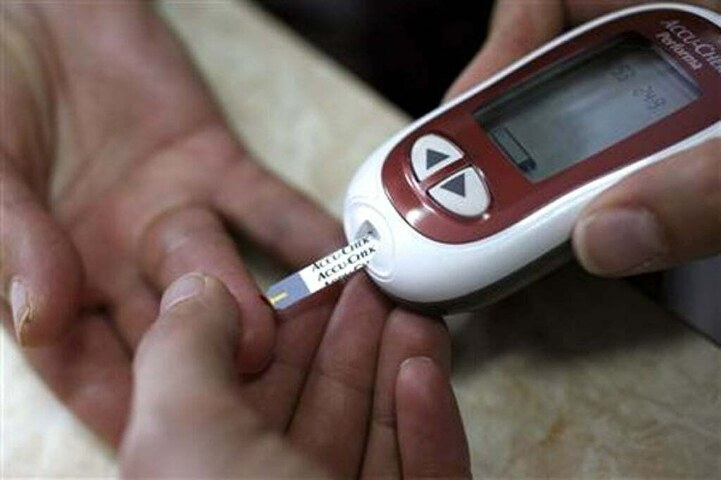KARACHI: Health experts said on Sunday that in Pakistan, 33 million people are currently living with diabetes, and projections indicate that the number could reach 62 million by 2045.
Diabetics Association of Pakistan Karachi organized a scientific session at a local hotel. The speakers highlighted the need to combat the growing diabetes challenge and take effective measures to mitigate the risk of type 2 diabetes in the country.
Professor Abdul Basit, General Secretary of the Diabetics Association of Pakistan (DAP), presented the theme of World Diabetes Day “Access to Diabetes Care” and this year’s campaign slogan “Know your risk of diabetes and your response.
He said diabetes is a persistent and debilitating health problem, imposing a significant financial burden on individuals and health systems. In Pakistan, 33 million people are currently living with diabetes. According to him, projections indicate that this number could reach 62 million by 2045.
At the heart of this initiative is the promotion of a nationwide screening program that uses the RAPID score, a scientifically validated tool designed to assess individual diabetes risk taking into account parameters such as age, waist circumference and a positive family history of diabetes. A score equal to or greater than 4 indicates the risk of developing diabetes.
It is crucial that all stakeholders come together and take decisive action now. Through this collective effort, we can significantly advance our efforts to address the diabetes challenge and improve public health for all.
Prof. Muhammad Yakoob Ahmedani, Professor of Medicine, Baqai Medical University (BMU), Karachi, spoke on the topic “Diabetes and Ramadan”. He said fasting throughout the month of Ramadan is one of the five pillars of Islam for all healthy Muslim adults and adolescents.
People with diabetes should be careful when fasting for long hours. Managing diabetes during Ramadan involves a multidisciplinary approach. To fast safely, they should seek advice from a healthcare professional regarding diet, exercise, insulin dosage, and medication adjustments.
Fasting diabetics should monitor their blood sugar levels regularly as they are at risk of hypoglycemia and hyperglycemia. Dehydration is a common and serious risk, so maintain adequate body fluids. Lemon water, cool water and Lassi are best. A spoonful of yogurt after Sehri meal is better for your health.
He asked to avoid caffeinated drinks like coffee and tea. Avoid foods high in sugar and calories. Avoid 3S foods, salty, spicy and sweet.
Moderate exercise is permitted. Insulin can be continued during fasting if it is properly tailored to the patient’s needs. If certain symptoms such as low sugar (below 70 mg/dL), high sugar (above 300 mg/dL), dehydration or acute illness occur, the fast should be broken. It is crucial that medical staff educate patients about safe fasting to minimize difficulties with fasting.
Dr. Munira Abbasi, Assistant Professor, Riphah Institute of Lifestyle Medicine, Islamabad, spoke on “Lifestyle Modification (LSM)”. She said diabetes is a chronic, debilitating and costly disease. Currently, more than 537 million people (1 in 10) live with diabetes.
This number is expected to reach 643 million by 2030. Approximately 541 million adults are at increased risk of developing type 2 diabetes. Type 1 diabetes cannot be prevented, but 80% of type 2 diabetes can be prevented by adopting a healthy lifestyle.
People at high risk of developing type 2 diabetes should be identified. Risk factors include age, waist circumference, family history, prediabetic, cardiovascular, gestational and hormonal history. Early detection and rapid intervention are essential to prevent diabetes and its complications.
There is substantial evidence that lifestyle modification, i.e. healthy diet, weight loss if overweight and regular physical activity – 30 minutes of brisk walking per day will reduce the risk of develop type 2 diabetes by 35 to 40%. “You can’t change your gene but you can change your lifestyle.”
Dr Somia Iqtadar, Associate Professor of Medicine at King Edward Medical University, Lahore, spoke on “Navigating the journey of high blood sugar in pregnancy through technology”.
She said GDM is one of the most common conditions during pregnancy. One in six live births (21 million) are affected by high blood sugar during pregnancy. If resistance to maternal insulin action becomes too pronounced, maternal hyperglycemia occurs and gestational diabetes may be diagnosed. Gestational diabetes is therefore defined as high blood sugar levels that develop during pregnancy and usually resolve after delivery. It can occur at any stage of pregnancy, but most commonly in the 2nd and 3rd trimesters.
Gestational diabetes is associated with an increased risk of babies growing larger than usual (birth weighing more than 4 kg), polyhydramnios, premature birth, preeclampsia, jaundice, stillbirth. Gestational diabetes is also associated with type 2 diabetes and cardiovascular disease later in life in the mother, as well as obesity and associated cardio-metabolic risk in the offspring. Risk factors for GDM are age over 40, obesity, having already had a baby weighing more than 4.5 kg at birth, GDM during a previous pregnancy, one of your parents or siblings had diabetes, a hormonal disorder called polycystic ovarian syndrome (PCOS). If you have one or more risk factors for GDM screening, screening should take place at the first appointment (8 to 12 weeks), then between 24 and 28 weeks if the first test is normal.
To check diabetic blood sugar, perform first 6 to 13 weeks after delivery, if the result is normal, then annually. To reduce the risk of future T2D, women who have had GDM are offered lifestyle advice (weight control, diet and exercise).
Professor Zainab Samad, Ibn-e-Sina Professor of Medicine, Professor of Cardiology Section and Chairman of the Department of Medicine, Aga Khan University, on the topic “The Burden of NCDs and the Role of Multiple Stakeholders”.
She said non-communicable diseases (NCDs), also known as chronic diseases, are the result of a combination of genetic, physiological, environmental and behavioral factors.
The main types of NCDs are cardiovascular diseases, cancer, diabetes and chronic respiratory diseases. NCDs kill 41 million people each year, and 77% of all NCD deaths occur in low- and middle-income countries.
Commercial Copyright Recorder, 2023
